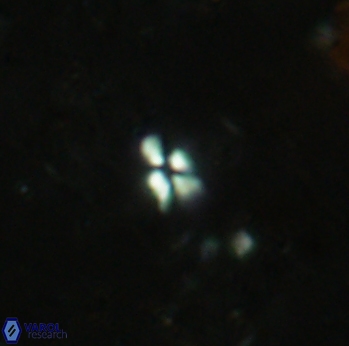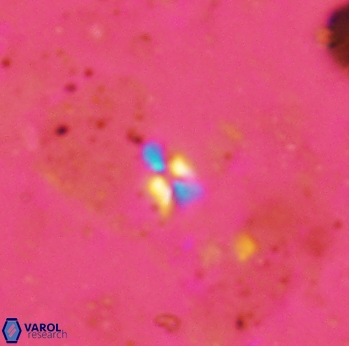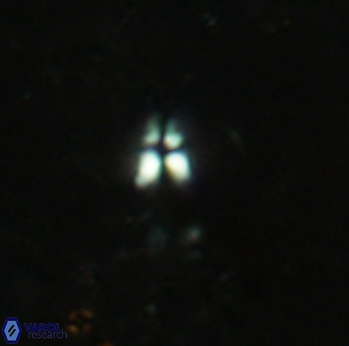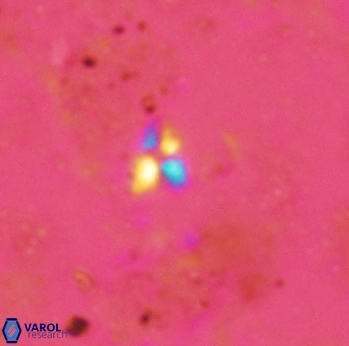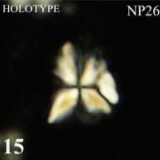Sphenolithus apoxis
Set number: 866
-
1
-
2
-
3
-
4
-
5
-
6
-
7
-
8
10µm
Set number: 863
-
1
-
2
-
3
-
4
10µm
Set number: 864
-
1
-
2
-
3
-
4
10µm
Set number: 865
-
1
-
2
-
3
-
4
-
5
-
6
-
7
-
8
10µm
Sphenolithus apoxis Bergen & de Kaenel in Bergen et al., 2017
The dome shape Sphenolithus Deflandre in Grassé (1952) is taller than wider and has three cycles of segments (proximal, lateral and apical).
The longitudinal extinction line is evident at 0° and always greater than the lateral extinction line. Entirely birefringent species at side and plan views.
The three cycles can be better seen in well-preserved specimens at 45° with the help of the gypsum plate.
The bouquet shape clustered apical cycle with axial c-axis is not forming a true apical spine.
The hollow frustum shape proximal cycle is creating a conical proximal cavity. The opposite side of the proximal cycle is better seen at 45° and displays an axial c-axis.
Sphenolithus apoxis is difficult to identify consistently from Sphenolithus abies Deflandre, 1953 ex Deflandre in Deflandre & Fert (1954) and Sphenolithus moriformis (Brönnimann & Stradner, 1960) Bramlette & Wilcoxon (1967), particularly at plan view.
The shallower dome shape Sphenolithus moriformis has a longer lateral extinction line than the longitudinal extinction line. Sphenolithus apoxis is taller than wider.
Sphenolithus apoxis has a bouquet shape cluster apical cycle, whereas Sphenolithus abies has a biconical apical cycle best seen at 45°.
Sphenolithus apoxis differ from Sphenolithus alatus Varol, in prep. by having a relatively larger apical cycle, lateral cycle with radial segment and much shallower proximal depression.
Bergen, J. A., de Kaenel, E., Blair, S. A., Boesiger, T. M. & Browning, E. 2017. Oligocene-Pliocene taxonomy and stratigraphy of the genus Sphenolithus in the circum North Atlantic Basin: Gulf of Mexico and ODP Leg 154. Journal of Nannoplankton Research 37(2-3): 77-112.
Bramlette, M. N. & Wilcoxon, J. A. 1967. Middle Tertiary calcareous nannoplankton of the Cipero section, Trinidad, W.I. Tulane Studies in Geology and Paleontology 5: 93-131.
Brönnimann, P. & Stradner, H. 1960. Die Foraminiferen- und Discoasteriden-zonen von Kuba und ihre interkontinentale Korrelation. Erdoel-Zeitschrift 76(10): 364-369.
Deflandre, G. 1952. Classe des Coccolithophoridés. (Coccolithophoridae. Lohmann, 1902). In: Grassé, P. P. (Ed.), Traité de Zoologie. Masson, Paris. 439-470.
Deflandre, G., 1953. Hétérogénéité intrinsèque et pluralité des éleménts dans les coccolithes actuels et fossiles. Comptes Rendus Hebdomadaires des Séances de l'Académie des Sciences, Paris 237, 1785-1787.
Deflandre, G. & Fert, C. 1954. Observations on current and fossil coccolithophorids in ordinary and electron microscopy. Annales de Paléontologie 40: 115-176.
